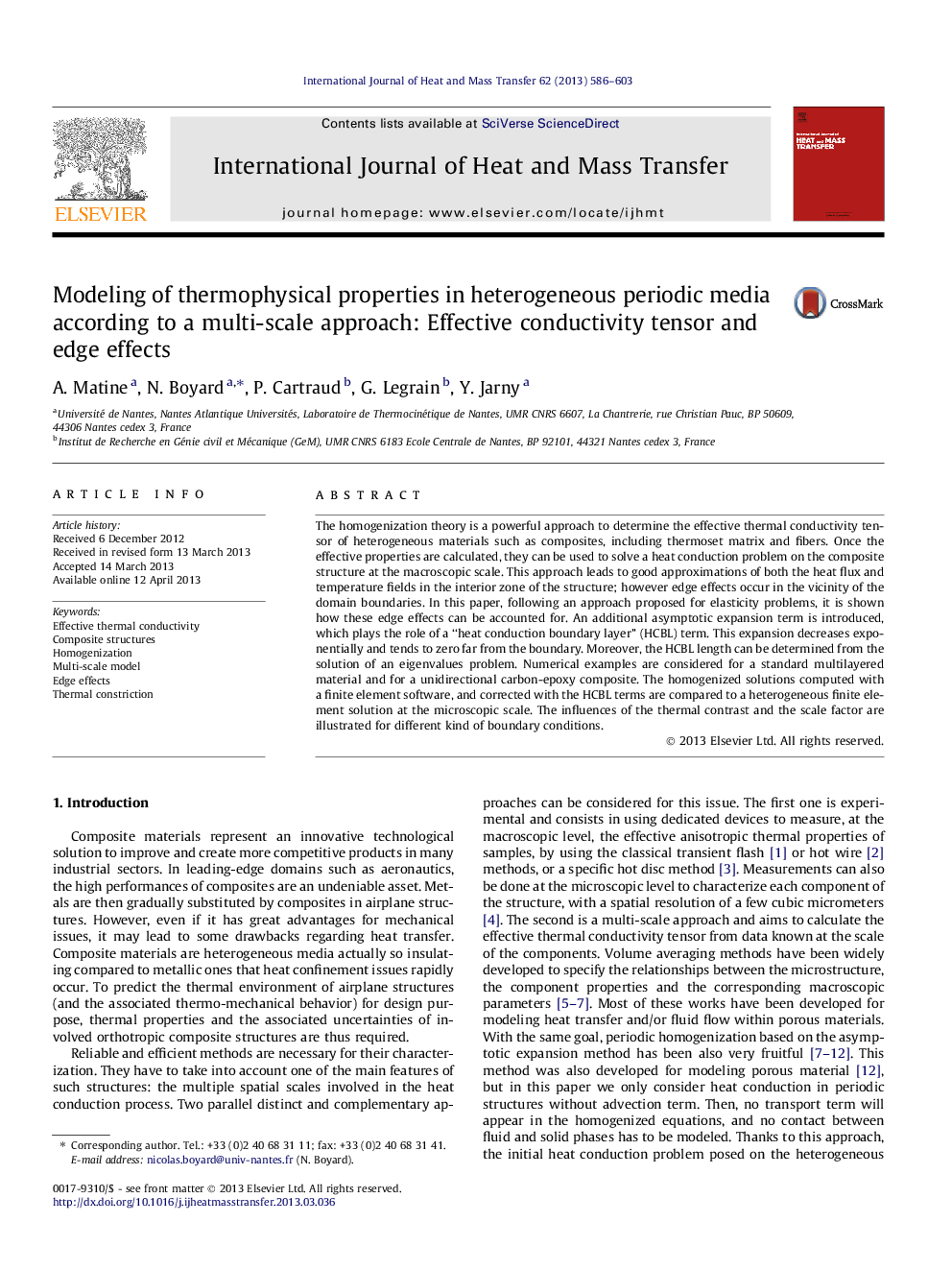| Article ID | Journal | Published Year | Pages | File Type |
|---|---|---|---|---|
| 658244 | International Journal of Heat and Mass Transfer | 2013 | 18 Pages |
The homogenization theory is a powerful approach to determine the effective thermal conductivity tensor of heterogeneous materials such as composites, including thermoset matrix and fibers. Once the effective properties are calculated, they can be used to solve a heat conduction problem on the composite structure at the macroscopic scale. This approach leads to good approximations of both the heat flux and temperature fields in the interior zone of the structure; however edge effects occur in the vicinity of the domain boundaries. In this paper, following an approach proposed for elasticity problems, it is shown how these edge effects can be accounted for. An additional asymptotic expansion term is introduced, which plays the role of a “heat conduction boundary layer” (HCBL) term. This expansion decreases exponentially and tends to zero far from the boundary. Moreover, the HCBL length can be determined from the solution of an eigenvalues problem. Numerical examples are considered for a standard multilayered material and for a unidirectional carbon-epoxy composite. The homogenized solutions computed with a finite element software, and corrected with the HCBL terms are compared to a heterogeneous finite element solution at the microscopic scale. The influences of the thermal contrast and the scale factor are illustrated for different kind of boundary conditions.
